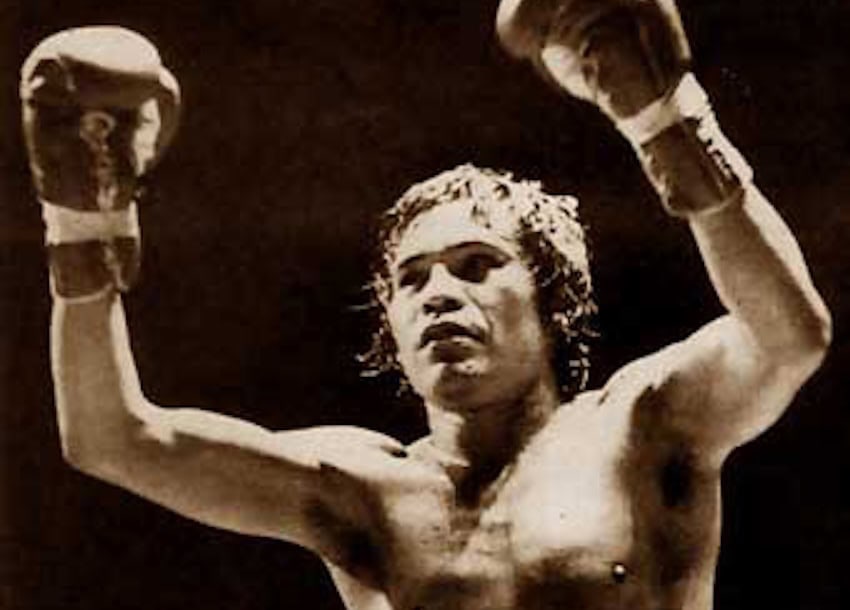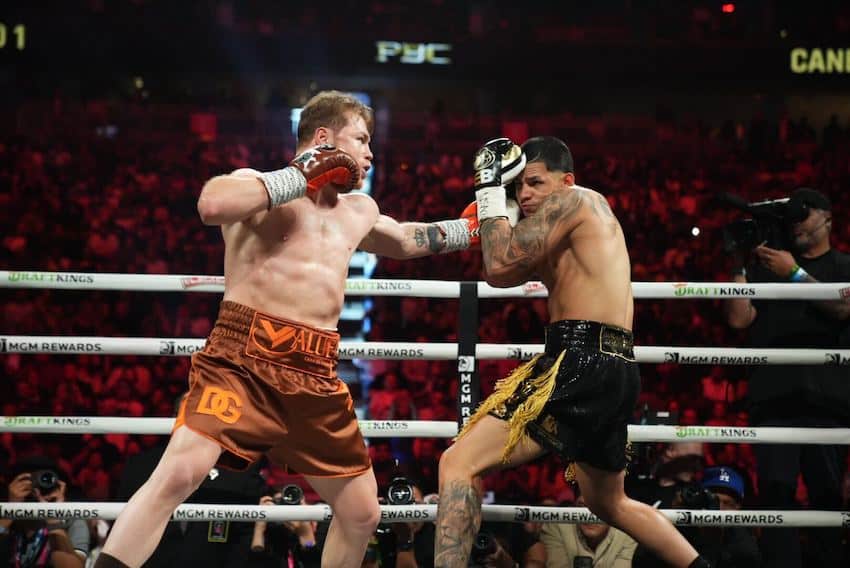The decades that immediately followed the first Golden Age of Mexican boxing encompassed talented fighters, trailblazing athletic spectacles and a handful of world champions.
But with the benefit of historical perspective, it now appears to be little more than an appetizer for what was to come. In part two of this series on the history of boxing in Mexico, we’ll look at the nation’s infamous second Golden Age, as well as some of the fighters and events that established the modern-day mythology which surrounds the sport in this country.
The second Golden Age of Mexican boxing

The second Golden Age of Mexican boxing extended from the late 1960s to the early 1980s. Mexican boxing’s latest glorious epoch possessed a significant distinction from its first: though the nation once again boasted an assortment of world-class fighters, those fighters were now competing almost exclusively in the United States.
One such individual was Rubén “El Púas” Olivares. The four-time, two-weight world champion was beloved in Mexico, both for his aggressive and entertaining fighting style and the boisterous persona he projected outside of the ring, Notably, Olivares was equally popular in the more lucrative market north of the border, where he made millions fighting the most significant bouts of his career in Los Angeles and was outdrawn in attendances only by Muhammad Ali.
Nonetheless, Mexico gained greater significance in the sport on a global level, as evidenced by the 1968 rebirth of the World Boxing Council (WBC). Initially founded at a 1963 convention in Mexico City — in part to protect Mexican boxers from increasingly venal managers and promoters in the U.S. — the organization was resurrected to challenge the US-centric power structure of the World Boxing Association. The WBC was established by representatives from Europe, Latin America and Asia and expressed an institutional shift in the international regulation of boxing.
Nobody symbolized the increasingly internationalist element of Mexican boxing better than José “Mantequilla” Nápoles. Born and raised in Cuba, Nápoles left his home for Mexico City in 1962 after Cuban prime minister Fidel Castro banned professional boxing. Over a 17-year career, he held the world championship twice, while his proud and public adoption of Mexican culture won him the love of the nation. His assimilation and celebrity status even earned him a co-starring role in the movie”La Venganza De La Llorona” with Mexican lucha libre icon El Santo.
Mexican boxers take the world stage
Significantly, Olivares and Nápoles also embodied the start of an era in which Mexico often claimed multiple world champions at once. With the simultaneous advancements in satellite technology that enabled overseas contests to be televised at home, this sporting success elevated boxing’s popularity to new heights, paving the way for even bigger icons to follow.
Of those icons, one was undoubtedly immortalized too soon; Salvador Sánchez amassed a professional record of 44-1-1, holding the WBC Featherweight Championship from February 1980 to August 1982. Tragically, Sánchez did not relinquish his title in the ring, but after losing his life in a car accident less than three weeks after convincingly defeating subsequent hall-of-famer Azumah Nelson.
Aged just 23, Sánchez had already accomplished more than the majority of boxers privileged with much longer careers, earningthe unwavering love of fans across the globe. At the moment of his death he was still entering his prime, already world champion and considered one of the best pound-for-pound fighters in the sport. He was inducted into the International Boxing Hall of Fame in 1991. As a line from his biography on the Hall of Fame website evocatively says, “the boxing world will forever wonder: what if?”
While Sánchez was propelled into legend by his premature demise, one of his contemporaries built his reputation through longevity. Today, Julio César Chávez remains arguably the most iconic and beloved fighter in Mexico’s history. The three-division world champion made his professional debut just three days after Sánchez claimed the world featherweight crown, as he embarked upon a career that would span 25 years and take him to the highest echelons of the sport.
Chávez, known for his relentless attacking pressure, violent body punches and one of the best chins in the sport’s history, made it through his first 90 fights undefeated ,accruing 89 victories and one draw. A six-time world champion, he retired with an astounding 107 professional victories to his name. It was “El César” who made the weekends of Cinco de Mayo and Mexican Independence Day immutable dates in the global boxing calendar, and his 1993 title defense at Mexico City’s Estadio Azteca still holds the world record attendance for a ticketed boxing match.
On Feb. 21 of that year, 132,274 spectators crammed into the Azteca to witness Chávez’s fifth-round demolition of the American Greg Haugen. Millions more tuned in to watch the bout, and the rest of the Sonora native’s illustrious career, on television sets all over the world. Today Chávez is universally regarded as one of the greatest boxers of all time, and perhaps Mexico’s proudest sporting export.
Mexican boxing in the new millennium

Mexico continued to produce world-class fighters into the 2000s. Boxers like Juan Manuel Márquez, Israel Vázquez and Rafael Márquez were lauded as champions on the world stage. And the venomous rivalry between Tijuana’s Erik “El Terrible” Morales and Mexico City’s Marco Antonio Barrera culminated in an iconic trilogy of fights that epitomized the immaculate skill and barbarous appeal of Mexican boxing while becoming a symbolic battleground of regional and class warfare.
The Barrera-Morales trilogy preceded an arguably more compelling quartet of fights between Vázquez and Rafael Márquez— a series notable for claiming both the 2007 and 2008 Ring Magazine Fight of the Year awards. And the latter stages of all four fighters’ careers flowed almost seamlessly into the ascendancy of Saúl “Canelo” Álvarez.
Now, Canelo, the latest in Mexico’s long line of boxing royalty is himself nearing the point of vacating his throne. We’re back in the present, and the scene is set for another generation of boxing heroes.
History tells us that the next one is never far away.
Ajay Smith is a freelance journalist and ghostwriter from Manchester, England, now based in Mexico City. His areas of specialization include boxing, soccer, political history, and current affairs. Samples of his work can be found at ajaysmith.com/portfolio.
